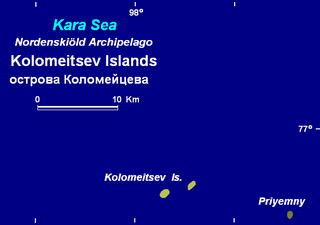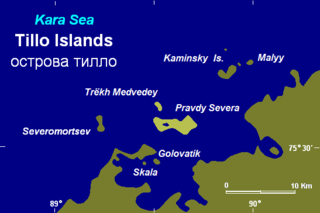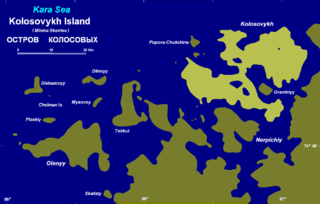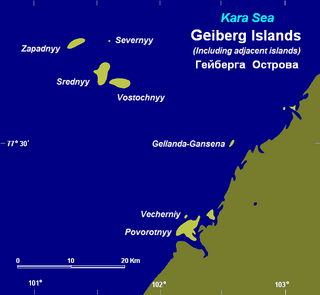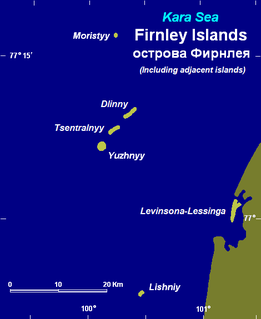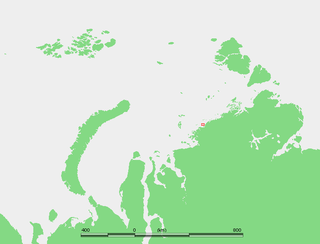

The Zveroboy Islands (Russian : Остров Зверобой, or Ostrov Zveroboy) is a group consisting of a large island (Zveroboy Island) and a few scattered small islets. The main island is 17 km in length. It is covered with tundra vegetation and has a lake. This island group is located in the Pyasino Gulf, in the Kara Sea, northeast of Dikson, off the coast of Siberia.

Russian is an East Slavic language, which is official in the Russian Federation, Belarus, Kazakhstan and Kyrgyzstan, as well as being widely used throughout Eastern Europe, the Baltic states, the Caucasus and Central Asia. It was the de facto language of the Soviet Union until its dissolution on 25 December 1991. Although, nowadays, nearly three decades after the breakup of the Soviet Union, Russian is used in official capacity or in public life in all the post-Soviet nation-states, as well as in Israel and Mongolia, the rise of state-specific varieties of this language tends to be strongly denied in Russia, in line with the Russian World ideology.
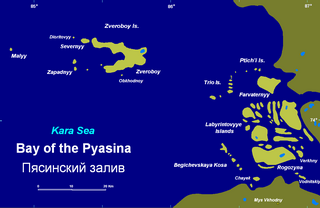
The Pyasino Gulf, also known as Pyasina Bay, is a bay at the mouth of the Pyasina River in the Kara Sea. It is limited on its western side by the Kamennyye Islands and on its northeastern side by the Minina Skerries.

The Kara Sea is part of the Arctic Ocean north of Siberia. It is separated from the Barents Sea to the west by the Kara Strait and Novaya Zemlya, and the Laptev Sea to the east by the Severnaya Zemlya archipelago. It is named after the Kara River, which is now relatively insignificant but which played an important role in the Russian conquest of northern Siberia. The Kara River name is derived from Nenets word meaning "hummocked ice".
The sea surrounding the Zveroboy Islands is covered with pack ice with some polynias in the winter and there are many ice floes even in the summer.
The climate in the area is Arctic, with long bitter winters and a short warmer period which barely allows the ice to melt.
These islands belong to the Krasnoyarsk Krai administrative division of the Russian Federation. The Zveroboy group is part of the Great Arctic State Nature Reserve of Russia.

Krasnoyarsk Krai is a federal subject of Russia, with its administrative center in the city of Krasnoyarsk—the third-largest city in Siberia. Comprising half of the Siberian Federal District, Krasnoyarsk Krai is the largest krai in the Russian Federation, the second largest federal subject and the third largest subnational governing body by area in the world, after Sakha and the Australian state of Western Australia. The krai covers an area of 2,339,700 square kilometers (903,400 sq mi), which is nearly one quarter the size of the entire country of Canada, constituting roughly 13% of the Russian Federation's total area and containing a population of 2,828,187, or just under 2% of its population, per the 2010 Census.

The Great Arctic State Nature Reserve is a nature reserve in Krasnoyarsk Krai, Russia. With an area of 41,692 square kilometers (16,097 sq mi), it is the largest reserve of Russia and Eurasia, as well as one of the largest in the world.






